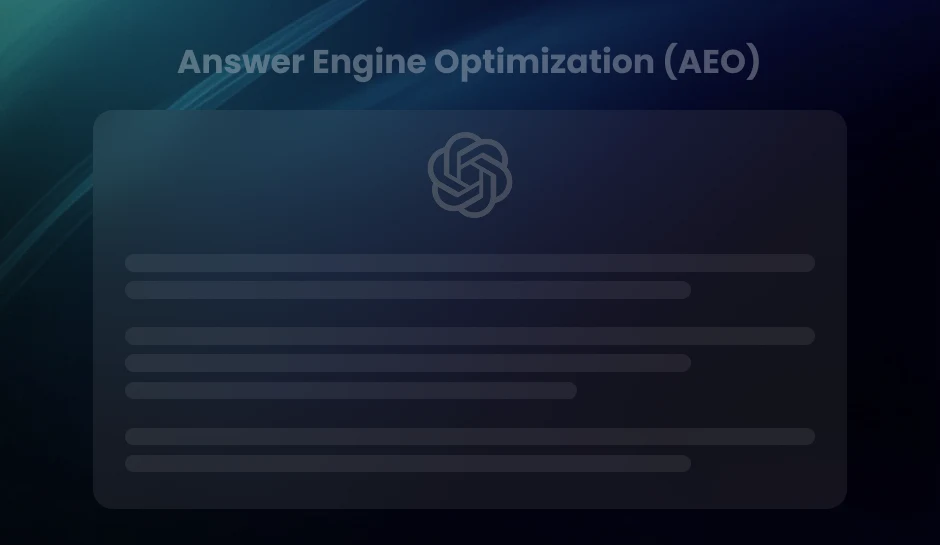Tracking the Right Metrics: Facebook Pixel vs Google Analytics for Smarter Campaigns
When it comes to measuring campaign success, not all analytics tools serve the same purpose. This article compares Facebook Pixel and Google Analytics, highlighting their unique strengths and ideal use cases. You will gain clarity on how to use these platforms effectively to track conversions, user behavior, and overall campaign performance for better marketing results.
Marketers today have no shortage of data, but not all data leads to smart decisions. The true challenge lies in tracking the right metrics the ones that reveal what is working, what is not, and where to optimize.
Two of the most powerful tools used for this purpose are Facebook Pixel and Google Analytics. While both offer valuable insights, they serve different roles in campaign tracking. Facebook Pixel focuses on ad-specific actions within the Meta ecosystem. Google Analytics offers a comprehensive overview of how users interact with your entire website.
If you are running paid campaigns, building audiences, or optimizing user journeys, understanding how these tools differ and how they complement each other is essential. This blog will help you compare the tracking capabilities of Facebook Pixel and Google Analytics so you can make smarter decisions for every campaign you run.
Why Accurate Metric Tracking Matters in Campaign Performance
Campaign performance is only as reliable as the data behind it. Metrics are not just numbers — they are signals that guide every decision, from budget allocation to creative strategy. When the wrong metrics are tracked, or when the right metrics are misunderstood, campaigns can quickly veer off course.
Accurate metric tracking allows you to answer critical questions with confidence:
- Are your ads reaching the right audience?
- Are users taking meaningful actions on your website?
- Are your conversions truly linked to specific campaign efforts?
Without precise answers to these questions, optimization becomes guesswork. Worse, you risk scaling underperforming campaigns or abandoning strategies that are actually working.
Choosing the right tracking tool is just as important as the metrics themselves. Facebook Pixel captures actions within the Meta advertising environment, like purchases or sign-ups triggered directly by ads. Google Analytics, on the other hand, maps the full user journey across traffic sources, devices, and pages.
Relying on just one tool, or interpreting its data in isolation, can lead to a fragmented view of performance. Marketers may overvalue certain channels, misattribute conversions, or fail to see drop-offs in the customer journey. To avoid these blind spots, it is essential to match your tracking approach to your campaign goals and understand how each tool fits into the bigger picture.
Facebook Pixel Overview
Facebook Pixel is a powerful tracking tool developed by Meta that allows advertisers to measure user actions on their websites directly linked to Facebook and Instagram ads. By placing a small snippet of code on your website, Facebook Pixel collects data that helps you understand how your ads influence user behavior, making it an essential tool for optimizing ad spend and improving campaign outcomes.
Key Metrics You Can Track with Facebook Pixel
Conversion Events: Facebook Pixel tracks specific user actions known as conversion events, which provide clear indicators of campaign success. These events include:
- Purchases: A transaction is successfully completed by a customer on your site.
- Leads: A user submits a form or subscribes to your email list.
- Add to Cart: A visitor selects an item and places it in their shopping cart without finalizing the order.
- Initiate Checkout: The user begins the checkout process, indicating purchase intent.
- Page Views: Records of user visits to important pages like product or landing pages.
These metrics enable you to see exactly how your ads are driving valuable actions, allowing for precise measurement of ROI.
Custom Audiences and Retargeting Behavior: One of Facebook Pixel’s strongest features is its ability to build custom audiences based on user interactions. For example, you can create segments of visitors who viewed a product but did not buy it or users who spent a significant amount of time on your site. These audiences can then be targeted with tailored ads, improving conversion rates through personalized retargeting campaigns.
Cost Per Action (CPA) on Facebook Ads: Facebook Pixel provides detailed data on the cost of each conversion action, such as a purchase or lead. This insight allows you to calculate your return on ad spend (ROAS) accurately. By understanding which ads drive the most cost-effective results, you can optimize your budget allocation to maximize profits.
Google Analytics Overview – A Broader Lens on User Behavior
Unlike Facebook Pixel, which focuses primarily on tracking actions related to Facebook and Instagram ads, Google Analytics offers a wider perspective on user behavior, traffic sources, and overall site performance. This makes it an essential tool for understanding your audience and optimizing marketing strategies across all channels.
Key Metrics You Can Track with Google Analytics
Page Views, Bounce Rates, and Session Duration: Google Analytics tracks fundamental user engagement metrics such as:
- Page Views:
- Bounce Rate:
- Session Duration:
The total number of pages on your website are loaded, giving your insight into content popularity.
The percentage of visitors who leave your site after viewing only one page, which helps identify pages that may need improvement.
The average time users spend on your site, indicating how engaged they are with your content.
These metrics help you evaluate how effectively your website captures and retains visitor attention.
Traffic Source Breakdown: One of Google Analytics’ key strengths is its ability to categorize where your traffic comes from, including:
- Organic search results
- Paid search ads
- Social media platforms (not limited to Facebook)
- Direct visits
- Referral links from other websites
Understanding traffic sources allows you to allocate your marketing budget and efforts more efficiently by focusing on channels that drive the most valuable visitors.
Multi-Channel Funnel Insights: This insight goes beyond last-click attribution, showing the role of channels like email, social media, paid ads, and organic search in the entire customer journey. It helps marketers identify which channels assist conversions and adjust strategies for better performance across the board.
When To Use Facebook Pixel, Google Analytics, Or Both
Selecting the right tracking tool is crucial to gaining accurate insights and making data-driven decisions. Facebook Pixel and Google Analytics each have strengths that suit different marketing objectives. Understanding when to use one over the other or both in combination will maximize the value of your analytics and enhance campaign performance.
Facebook Pixel Only
Facebook Pixel is best suited for marketers whose campaigns are heavily focused on the Meta ecosystem, primarily Facebook and Instagram ads. It offers granular, real-time data on how users respond specifically to your social ads.
- Real-time conversion feedback tied to ad sets. Facebook Pixel tracks user actions such as purchases, leads, or add-to-cart events as they happen. This allows immediate optimization of bids, budgets, and creatives based on current performance.
- Detailed ad performance metrics within Facebook’s platform. Since Pixel integrates directly with Meta’s ad manager, it provides precise attribution of conversions to individual ads and campaigns.
- Custom audiences and retargeting capabilities. Pixel data enables building audiences based on website behavior linked to Facebook ads, making retargeting campaigns more effective and focused.
Google Analytics Only
Google Analytics is indispensable when your goals extend beyond paid social ads to a comprehensive understanding of visitor behavior.
- Tracking of organic and referral traffic sources. Google Analytics identifies where your visitors come from, whether it is organic search, email campaigns, direct visits, or referrals. This gives you a full picture of traffic acquisition.
- Cross-device and multi-session audience insights. GA tracks users across multiple sessions and devices, helping you understand user engagement patterns over time rather than isolated interactions.
- In-depth behavioral analytics. Metrics like bounce rate, session duration, and page flow reveal how visitors interact with your site content. This helps you optimize the user experience and identify drop-off points.
Using Both Together
For the most robust and actionable insights, combining Facebook Pixel and Google Analytics is the optimal strategy. Together, they offer complementary perspectives that fill in each other’s gaps:
- Combine ad-specific insights with overall web performance data. Facebook Pixel shows exactly how users respond to your Meta ads, while Google Analytics reveals what happens after those users interact with your website regardless of traffic source.
- Bridge attribution gaps. Facebook Pixel focuses on last-click or view-through conversions within the Meta platform. Google Analytics captures multi-channel attribution, showing how other channels assist in conversions. Using both tools helps you understand the complete conversion path.
- Gain a full-funnel view of the customer journey. Together, these platforms track users from initial ad exposure through on-site behavior, repeat visits, and eventual conversion. This empowers you to optimize both paid campaigns and organic growth strategies.
Pro Tip-Using both Facebook Pixel and Google Analytics enables marketers to identify blind spots in data, reduce reliance on assumptions, and make decisions backed by a fuller, more accurate picture of customer interactions.
Key Takeaways
- Facebook Pixel excels at tracking specific actions tied to Facebook and Instagram ads, offering precise conversion data and retargeting opportunities.
- Google Analytics provides a comprehensive overview of website traffic and user behavior from all sources, not limited to paid ads.
- Using only one tool can lead to incomplete or skewed data, limiting insight into the full customer journey.
- Combining Facebook Pixel and Google Analytics offers the most complete understanding of ad performance and website engagement.
- Choosing the right tool depends on your campaign goals, whether you need granular ad data, broad site analytics, or both.
Conclusion
Understanding how Facebook Pixel and Google Analytics work individually and together is vital for effective campaign measurement. Each tool captures different but complementary data points that help you evaluate performance, attribute conversions, and optimize marketing efforts. Using them in tandem ensures you do not miss key insights about user behavior or ad effectiveness. Implementing the right tracking strategy aligned with your specific goals allows you to make data-driven decisions that improve return on investment and overall campaign success.
Is it time to accelerate your marketing results? We can help you get there.
Our experts at DiGGrowth are here to help you navigate the complexities of analytics selection and migration, ensuring your team gets the insights and confidence needed to grow. Connect with us at info@diggrowth.com.
Ready to get started?
Increase your marketing ROI by 30% with custom dashboards & reports that present a clear picture of marketing effectiveness
Start Free Trial
Experience Premium Marketing Analytics At Budget-Friendly Pricing.

Learn how you can accurately measure return on marketing investment.
Additional Resources
Don’t Let AI Break Your Brand: What Every CMO Should Know
AI isn’t just another marketing tool. It’s changing...
Read full post postFrom Demos to Deployment: Why MCP Is the Foundation of Agentic AI
A quiet revolution is unfolding in AI. And...
Read full post postAnswer Engine Optimization (AEO): The New Frontier of SEO in 2025
As digital experiences continue to evolve, so does...
Read full post postFAQ's
No, Facebook Pixel is designed specifically to track user actions originating from Facebook and Instagram ads. It does not capture conversions from other advertising platforms or organic traffic.
While both tools require code implementation, many platforms offer straightforward integration guides and plugins. With proper setup, they can run concurrently without conflicts, providing complementary insights.
Google Analytics primarily tracks online interactions but can integrate with offline data through imported conversions or CRM integration, enabling a fuller picture of campaign effectiveness.
Regular review depends on campaign scale but checking data weekly or biweekly allows timely optimizations. For active campaigns, daily monitoring of key metrics can help respond quickly to performance shifts.
 Rahul Sachdeva
Rahul Sachdeva 

